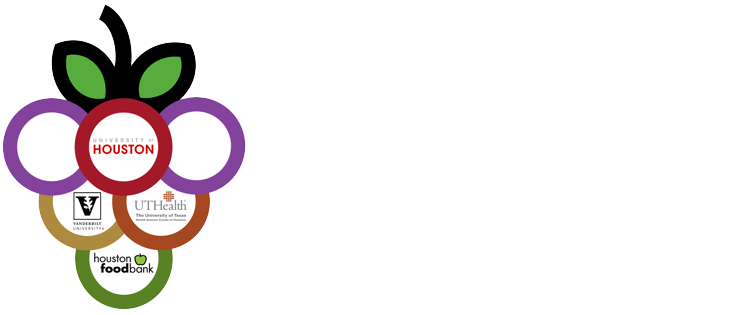Equitable and Resilient Food Distribution During Extreme Weather Events Through AI
The AI-SERVE project stands at the forefront of innovation, aiming to transform the emergency management landscape. Leveraging the power of Artificial Intelligence, AI-SERVE seeks to revolutionize how we approach food distribution during pandemics and extreme weather events. Its mission is clear: to bring automation technology to the heart of crisis response, ensuring equitable and resilient food distribution for all, especially those in dire need.
AI-SERVE Research Objectives
AI-SERVE is reshaping the landscape, ensuring that AI-driven decision-making and support lead to efficient, equitable, and resilient food distribution when it matters most. We're developing a multi-faceted platform targeting the needs of diverse stakeholders. Each module incorporates a plan, prepare, recover, based on key challenges we've identified.
Mitigate Food Insecurity
Addressing widespread food insecurity risks, especially among vulnerable households.
Optimize Supply Chains
Enhancing supply chain and food distribution systems during natural disasters and crises like hurricanes.
Minimize Health Impact
Implementing a comprehensive model for preparedness, recovery, and lessons learned to reduce health impacts.
Supporting Disaster Partners
Providing disaster partners platform to plan, prepare and recover from any extreme weather events.
Join AI-SERVE's Mission
Join us in our mission to revolutionizing emergency management with AI-Driven Food Distribution.
AI-SERVE
AI Support for Equitable and Resilient Food Distribution During Extreme Weather Events
Reach out to us for collaborations, inquiries, or to learn more about our initiatives. We're based at the University of Houston and are eager to hear from you.
Contact
Computational Biomedicine Lab
c/o Ioannis A Kakadiaris
University of Houston
4349 MLK Blvd, Rm 322
Houston, TX 77204-6022
Support
This material is based upon work supported by the National Science Foundation under Grant No. 2133352. Any opinions, findings, and conclusions or recommendations expressed in this material are those of the authors and do not necessarily reflect the views of the National Science Foundation.






